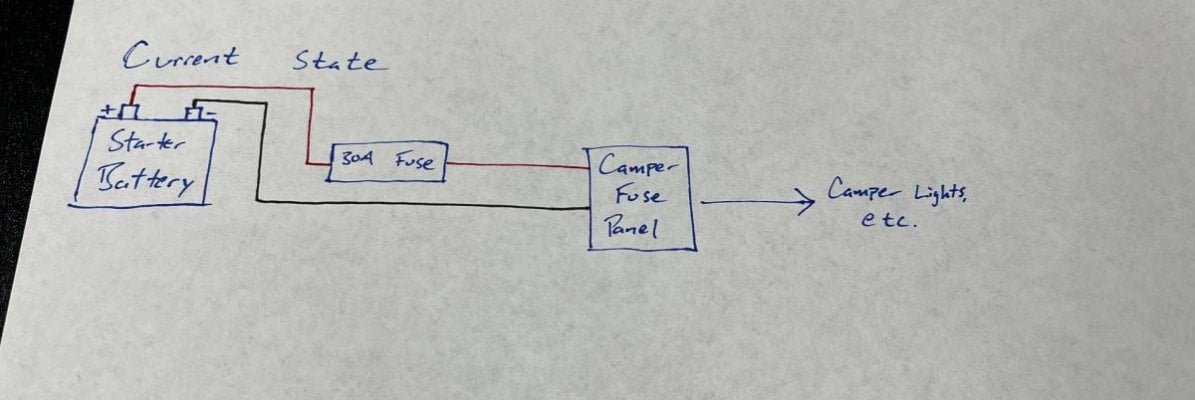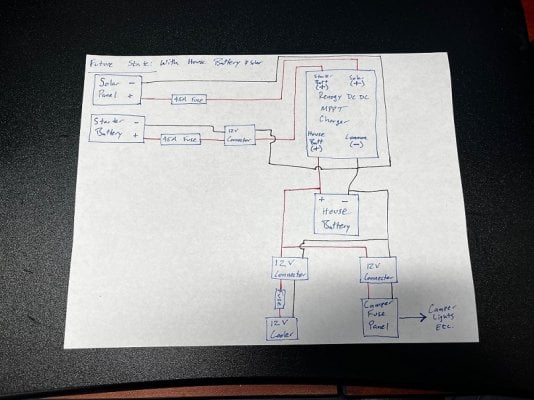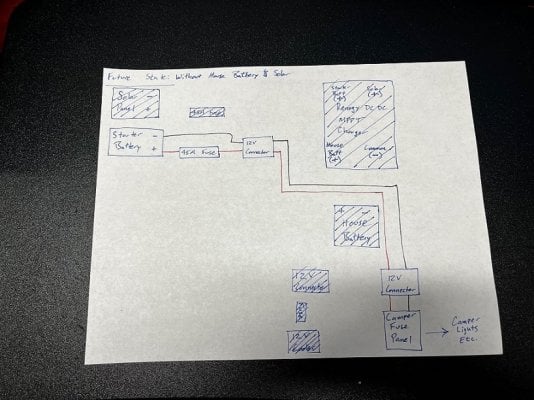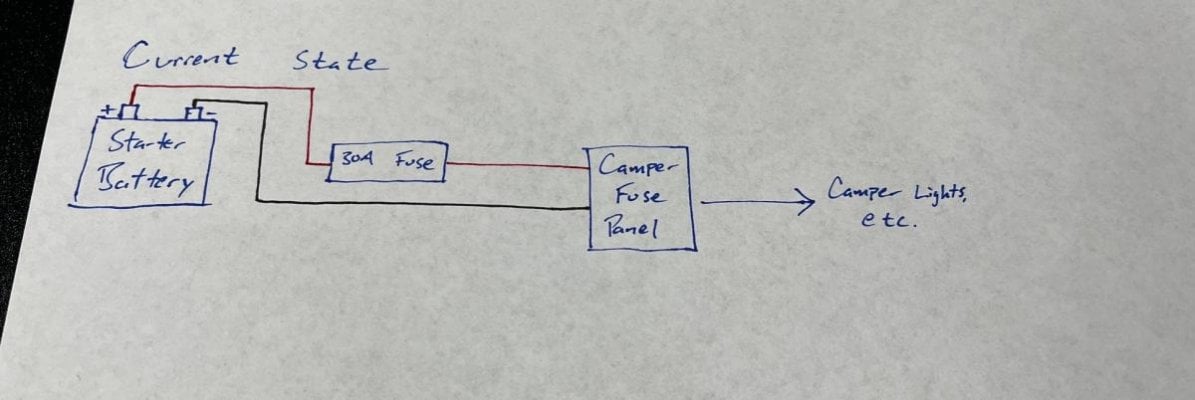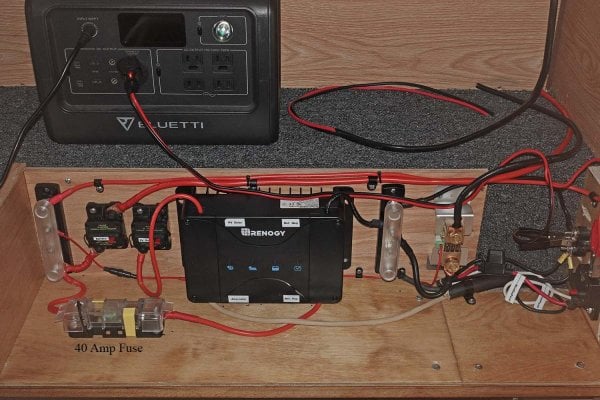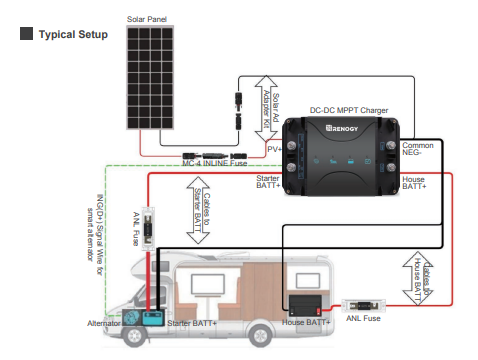Hi All,
Apologies if this has been asked before, I did some searching around and didn't turn anything up. My dad and I share an ATC Ocelot. He uses it mostly for overnight stops on the way to/from destinations, and I often use it for longer trips, staying in one place multiple days, etc...
We're currently powering everything off of the starter battery, but I'm looking at adding a 12V Cooler, and therefor a lithium battery, solar, etc... I think I've got a good handle on the system requirements (thanks to many many helpful posts on here!), but I think there will be some instances where each of us have trips planned at the same time. In those cases, he gets the camper (he did pay for it after all) and I get the cooler/battery.
So, my question is: if we'd like an easy way to switch back and forth between the starter battery and the house battery, is it as simple as adding a few 12V connectors to our wire runs (before the starter battery to charge controller connection and before the house battery to camper fuse panel connection) so we can just remove the charge controller and house battery from the system and get back to our "current state"?
It can be difficult to put these systems into words, so I've attached a few simple diagrams of the current state, and both future states. Note, I do plan to add a shunt monitor to the house battery, but left it off the drawings for simplicity.
Thanks in advance for all of the help!
- Brian
Apologies if this has been asked before, I did some searching around and didn't turn anything up. My dad and I share an ATC Ocelot. He uses it mostly for overnight stops on the way to/from destinations, and I often use it for longer trips, staying in one place multiple days, etc...
We're currently powering everything off of the starter battery, but I'm looking at adding a 12V Cooler, and therefor a lithium battery, solar, etc... I think I've got a good handle on the system requirements (thanks to many many helpful posts on here!), but I think there will be some instances where each of us have trips planned at the same time. In those cases, he gets the camper (he did pay for it after all) and I get the cooler/battery.
So, my question is: if we'd like an easy way to switch back and forth between the starter battery and the house battery, is it as simple as adding a few 12V connectors to our wire runs (before the starter battery to charge controller connection and before the house battery to camper fuse panel connection) so we can just remove the charge controller and house battery from the system and get back to our "current state"?
It can be difficult to put these systems into words, so I've attached a few simple diagrams of the current state, and both future states. Note, I do plan to add a shunt monitor to the house battery, but left it off the drawings for simplicity.
Thanks in advance for all of the help!
- Brian

